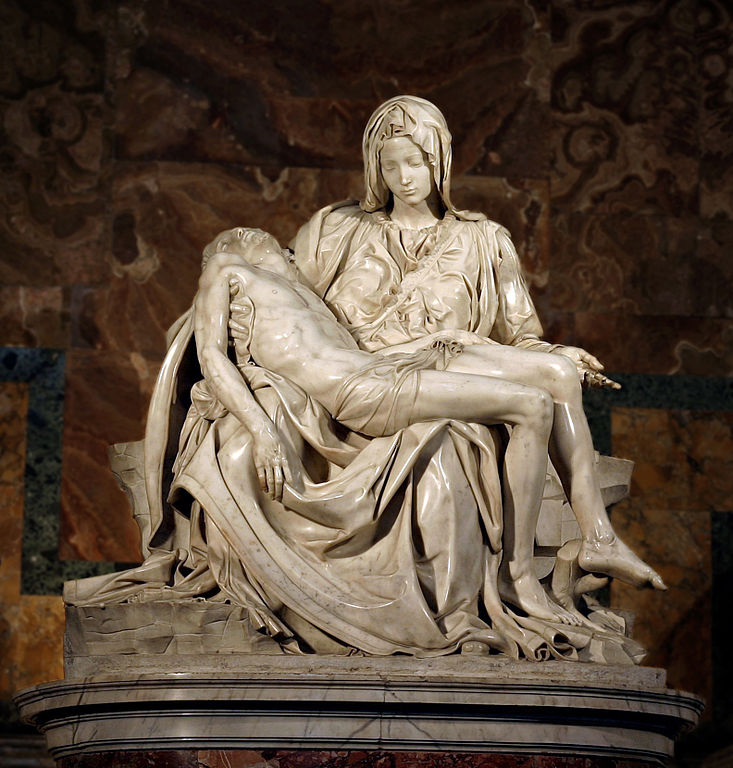
Name: Pietà
Artist: Michelangelo Buonarotti
Date Sculpted: 1498 – 1499
Period: High Renaissance
Dimensions: 174 cm (h) x 195cm (w)
Medium / Material: Marble
Current Location: Saint Peter’s Basilica, Vatican City
Introduction to Pietà
The Pietà by Michelangelo Buonarroti is one of the most stunning and technically impressive sculptures in the history of art. Created between 1498-1499, it is housed in St. Peter’s Basilica in Vatican City. This masterpiece was carved from a single block of Carrara marble and is the only piece Michelangelo ever signed. The Pietà depicts the Virgin Mary holding the dead body of Jesus Christ after his crucifixion, a theme common in Christian art and known as the Pietà, which in Italian means “pity” or “compassion.”
Composition and Emotion
The sculpture is renowned for its incredible emotional depth and physical realism. Michelangelo’s Pietà differs significantly from earlier versions of the subject. The Virgin Mary is depicted as youthful and serene, transcending the sorrow of the moment. This choice has been interpreted as Michelangelo’s desire to depict eternal purity and youth, which Mary, as a symbol of the Church, embodies.
Technical Mastery and Symbolism
Michelangelo’s technical skill is evident in the lifelike details of the figures. The drapery of Mary’s robe is carved with astonishing precision, suggesting the weight and texture of fabric. The body of Christ is rendered with such realism that the marks of his Passion are both explicit and delicately handled, conveying his human vulnerability and divine nature.
One of the most remarkable aspects of this sculpture is how Michelangelo manipulated the proportions to maintain visual harmony. Despite being cradled by Mary, Jesus does not appear oversized. Michelangelo skillfully adjusted the proportions to enhance the composition’s aesthetic without compromising realism.
Emotional Impact
The Pietà evokes a profound sense of compassion and sorrow. Mary’s face, calm and resigned, reflects a deep maternal love and a stoic acceptance of her fate. The interaction between the figures, with Mary holding Jesus in a gentle, yet poignant embrace, evokes a powerful emotional response from the viewer.
Innovation
Michelangelo broke new ground with this work, both in terms of technical skill and emotional depth. His ability to extract such beauty and pathos from a single block of marble was unprecedented. The Pietà established Michelangelo as one of the leading artists of his time and remains a testament to his genius.
Conclusion
The Pietà is not just a religious symbol but a universal expression of compassion, maternal love, and the human condition’s fragility. Michelangelo’s mastery over marble enabled him to imbue the sculpture with a tenderness and intensity that continue to move viewers centuries after its creation. The Pietà remains a pinnacle of Renaissance sculpture, reflecting the era’s artistic achievements and its enduring humanist values.